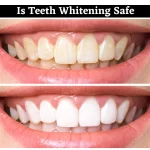When an experienced dentist performs dental implant surgery, it is one of the safest and most predictable types of dental surgery. The implant provides strong support for teeth replacement and allows the appearance and function of the teeth to be restored, including the stimulation of bone regrowth underneath the tooth. However, several risks and complications are associated with dental implants and should be considered and minimized.
There are various factors that can affect the healing period following a dental implant, such as the quality of the bone and bone density at the site and the response of the tissue to the implant. To reduce the risks during the healing period following a dental implant, it is recommended to avoid applying excessive force to the implant as it heals.
Failure to Integrate
Primary implant stability, which refers to the stability of a dental implant directly following the procedure, is a significant factor for the integration of the implant into the bone. Insufficient primary stability can lead to failure of the implant within the initial weeks.
As the bone surrounding the implants begins to regrow and fuse with the dental implant, this supports the implant and provides secondary stability. This continues to strengthen as the fusion between the bone and implant increases, eventually leading to biological stability in the ideal scenario.
When the implant cannot be placed in the bone sufficiently to provide primary stability of the implant, there is an increased risk of failure of osseointegration. Prophylactic antibiotics are usually given prior to the implantation procedure, as this can help to reduce the risk of implant failure by a third.
Perforation
During the procedure to place a dental implant in the jaw, some of the nearby anatomic structures are sometimes injured. This includes perforation of the maxillary sinus, inferior border, lingual plate, labial plate, inferior alveolar canal, or gingiva.
If the maxillary sinus cavity is perforated by the implant, for example, this can lead to sinus problems and infections in the area in the future.
Infection
Infection is a considerable complication of dental implantation. Infection can occur in the affected area, presenting as an abscess, fistula, suppuration, inflammation or radiolucency. Additionally, it can also affect wider areas of the body to cause a systemic infection.
Excessive Bone Loss
Excessive bone loss in the area of the dental implant can reduce the stability of the implant replacement and usually requires intervention.
Bone loss between the implants and natural teeth can also lead to the appearance of black triangles between the teeth, which are not aesthetically pleasing and increase the difficulty of maintaining clean teeth.
Implant Breakage or Fracture
Breakage or fracture of the dental implant abutment screw is a serious complication that cannot be easily fixed. It can occasionally be salvaged with the removal of the screw and replacement of the dental implant, but the remaining bone may not be strong enough to support a new implant in some cases.
Fracture of an abutment can be fixed by replacing the abutment and crown. This is an aesthetic complication that does not have a significant impact on the fusion of the implant and the bone, thus is much easier to handle than breakage of the abutment screw.
It is advised that dental implant surgery should be performed only by an experienced dentist. Make sure you are fully aware of the dentists’ experience with dental implants before going in for surgery.

















